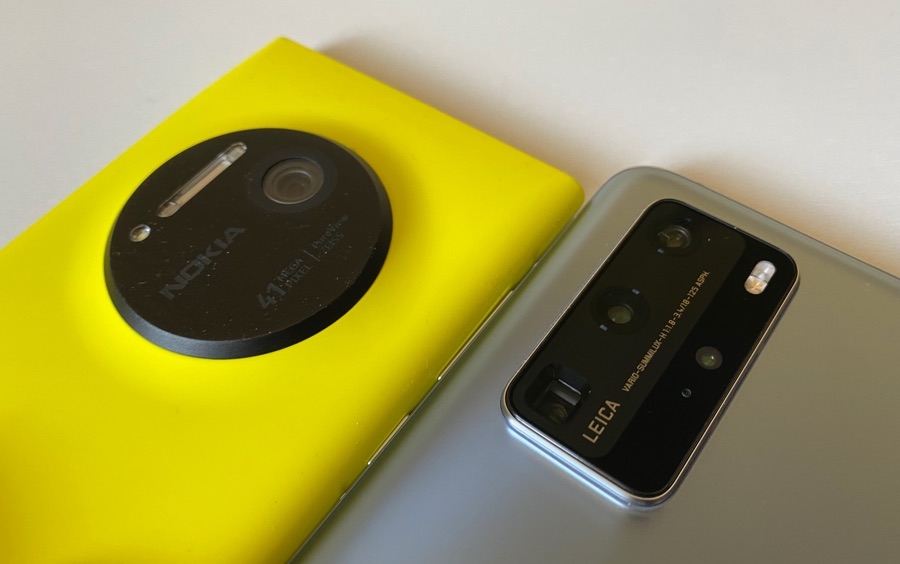
Let's start with a few specs, obviously favouring the far newer device, but worth noting anyway:
| Nokia Lumia 1020 | Huawei P40 Pro |
|
Single camera: 41 MP, f/2.2, 1/1.5", contrast-AF, OIS Xenon flash plus LED video light |
Main camera: 50 MP RYYB, f/1.9, 1/1.28", omnidirectional PDAF, OIS Periscope camera: 12 MP RYYB, f/3.4, PDAF, OIS, 5x optical zoom Ultra-wide camera: 40 MP, f/1.8, 1/1.54", PDAF Dual LED flash |
Huawei's array makes a lot of sense, in terms of getting the most light in, most efficiently (those RYYB sensors), and in getting up to a very useable 10x hybrid zoom, while also having a wide angle system that can focus (unusual). The only weaknesses I can spot are what happens between zoom of about 3x and 4.9x, and a general worry that Huawei will have overdone the edge enhancement for the nth year in a row...
Anyway, on with the tests. Can Eero's original 2013 classic get close to the 'state of the art' in Android high end imaging in 2020, seven YEARS later?
Notes:
- I've shot at the default output resolutions on each, leaving headroom for lossless 'PureView' zoom into the sensors, where appropriate, and also getting the advantages of oversampling and noise reduction.
- The field of view and resolution of the various cameras compared is different across the board, so 1:1 crops won't always show exactly the same framing. Deal with it(!)
- All photos were taken on full auto and handheld, as a regular user would do. No tripods or RAW editing sessions needed!
Let's pit the results against each other, using our Famed Interactive Comparator (FIC). All 1:1 crops are at 900x500 for comparison, though I've put up the originals on my own server, for you to download if you want to do your own analysis.
| Note that the interactive comparator below uses javascript and does need to load each pair of images. Please be patient while this page loads, if you see a pair of images above each other than you've either not waited long enough or your browser isn't capable enough! You ideally need a powerful, large-screened tablet or a proper laptop or desktop. This comparator may not work in some browsers. Sorry about that. On Windows 10 Mobile, use the 'AAWP Universal' UWP app, which handles the comparator very competently (see the tips in the app's help screens) |
Test 1: Sunny landscape
A local pub, lit in the sun. CoronaVirus means the pub is closed, but hey! Here is the overall scene:

You can grab the original photos from the Lumia 1020 and Huawei P40 Pro, for your own analysis. See the note below concerning the P40 Pro image though!!
To look at the images in more detail here, here are fairly central 1:1 crops, from the Lumia 1020 and Huawei P40 Pro, just wait to make sure the page has fully loaded and then use your mouse or trackpad pointer to compare the images:
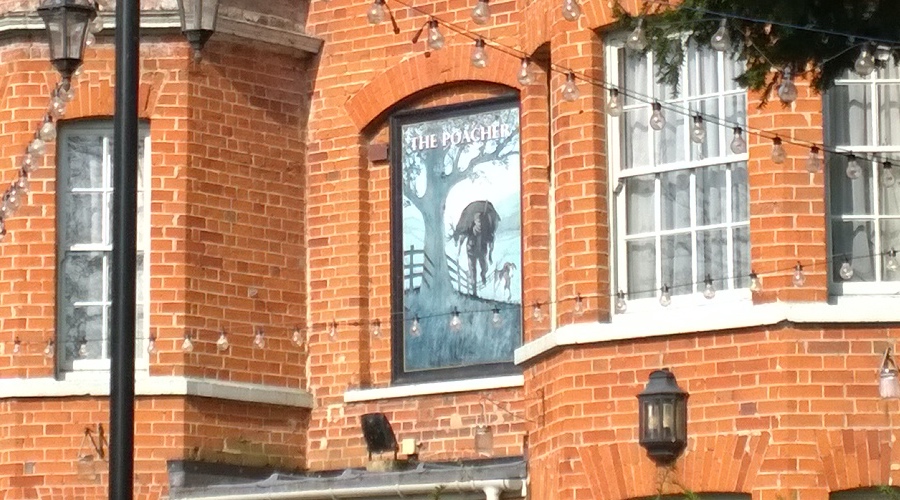
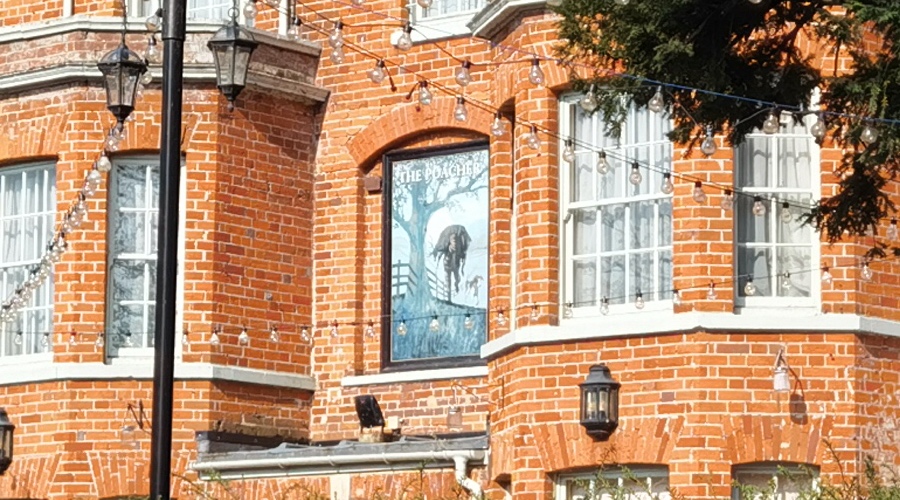
Ah yes. I blame COVID-19. I shot this on the way back from an essential errand (delivering face mask parts, if you must know) and then returned home, as advised by the government. Which means that I then discovered that the P40 Pro had DEFAULTED to the wide angle lens! It's done this several times now, in fact and has caught me out each time. It's not the app remembering the last mode used, it just does it seemingly at random. Maybe the 'AI' (deliberately enabled) detects the subject and wants to try and fit it all in? It's possible. All very odd, and not a showstopper for the man in the street, as the wide angle JPG (linked above) is indeed very good, spoiled only by the extra edge enhancement you can see here.
Making scoring this a little awkward. The 1020's shot is 100% perfect. But I can't knock too much off the P40 Pro, despite the details being sub-par.
Microsoft Lumia 1020: 10 pts; Huawei P40 Pro: 8 pts
Test 2: Sunny landscape, x2 zoom
OK, so I was paying attention to the zoom factor this time! 2x zoom on the P40 Pro, maximum zoom (2.5x) on the Lumia 1020, which is outputting at lower resolution, so this should match up well. You can grab the original photos from the Lumia 1020 and Huawei P40 Pro, for your own analysis.
To look at the images in more detail here, here are fairly central 1:1 crops, from the Lumia 1020 and Huawei P40 Pro, just wait to make sure the page has fully loaded and then use your mouse or trackpad pointer to compare the images:


I'd expect the results here to be similar, since both are smart-cropping down from a similar size/resolution main sensor - think of the P40 Pro's main sensor as a descendant of the 1020's here. And yes, the photos are very comparable, with just extra sharpening in the Huawei algorithms to make the image 'pop' more. Me, I'm never a sharpening fan, since you can add that later, but Huawei seems to mandate it, so...
Microsoft Lumia 1020: 9 pts; Huawei P40 Pro: 9 pts
Test 3: Showing off with 5x zoom
The same scene again, but this time matching the 1020's output against the 5x periscope zoom optics of the P40 Pro. You can grab the original photos from the Lumia 1020 and Huawei P40 Pro, for your own analysis.
To look at the images in more detail here, here are fairly central 1:1 crops, from the Lumia 1020 and Huawei P40 Pro, just wait to make sure the page has fully loaded and then use your mouse or trackpad pointer to compare the images:


Dramatically different results, as you'd expect. The RYYB sensor behind that 5x telephoto periscope is quite something. Outstanding zoom results.
Microsoft Lumia 1020: 7 pts; Huawei P40 Pro: 10 pts
Test 4: Ultimate zoom
This cellphone aerial set-up, lit by the late afternoon sun, is very high up and zoom is the only way to resolve details. Consider this an ultimate zoom test. Here is the overall scene:

I then zoomed in by maximum (2.5x) on the 1020 and 5x on the P40 Pro. You can grab the original photos from the Lumia 1020 and Huawei P40 Pro, for your own analysis.
To look at the images in more detail here, here are fairly central 1:1 crops, from the Lumia 1020 and Huawei P40 Pro, just wait to make sure the page has fully loaded and then use your mouse or trackpad pointer to compare the images:
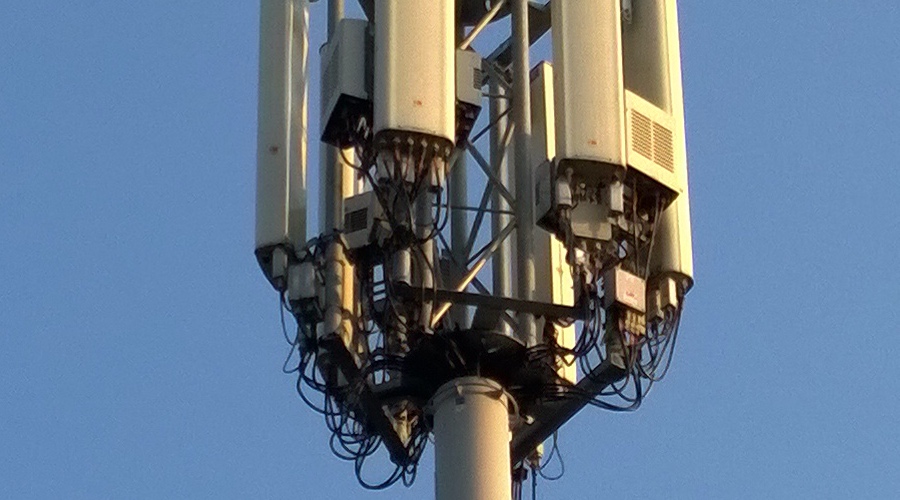
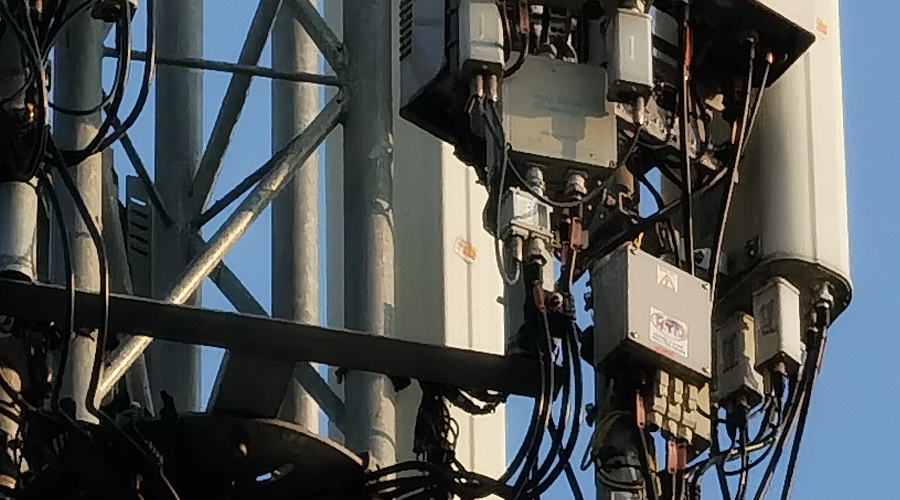
The Lumia 1020 shot is stunning, especially for a 2013 phone - it's detailed and pure (despite the zoom) and it's hard to knock it any points. But this is again about zoom, so the P40 Pro has to win with its stunning 5x periscope zoom system. Look at the detail below, consider that it was shot on a phone. And then marvel that the 10 hybrid (software) zoom is also a possibility if more were needed. Very impressive, Huawei.
Microsoft Lumia 1020: 8 pts; Huawei P40 Pro: 10 pts
Test 5: Delicate detail
Some white blossom, lit by the sun, shot at about 15cm. You can grab the original photos from the Lumia 1020 and Huawei P40 Pro, for your own analysis.
To easily compare the images (a 1:1 crop would be just too close!), I've scaled them down from the Lumia 1020 and Huawei P40 Pro, just wait to make sure the page has fully loaded and then use your mouse or trackpad pointer to compare the images:

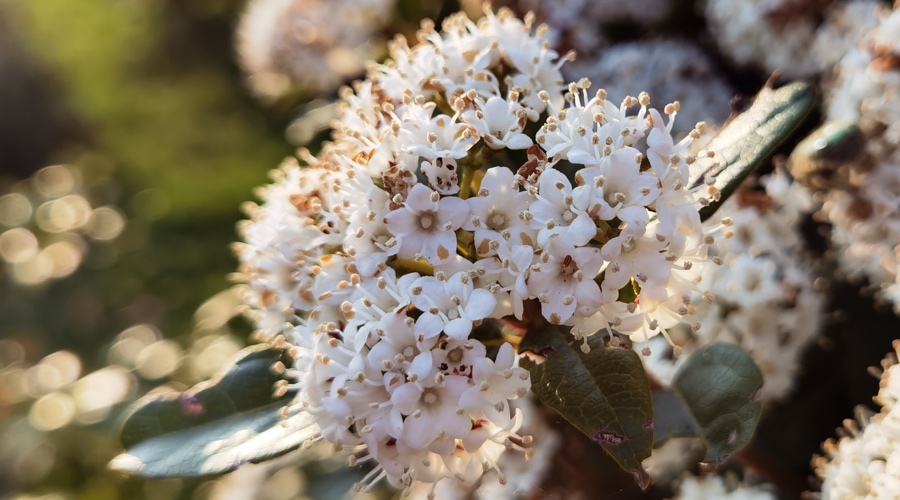
Although the P40 Pro does well here, it's becoming apparent that the large aperture and large sensor mean that the depth of field for close-up subjects is so small that part of the subject is often lost in terms of focus. The same is true, incidentally, of the also new Samsung Galaxy S20 Ultra, which I tested here. Modern phone cameras are now getting so powerful that they're in danger of losing detail for casual snappers. As here. The Lumia 1020 is of an older generation and its f/2.2 aperture means plenty of depth of field to capture the whole blossom.
Who'd have thought it? I think Samsung had it right a couple of years ago with dual aperture main cameras. So in the sun, as here, it would use the f/2.4 aperture and get the shot right. Huawei, this needs a rethink. Methinks(!) See also the example below, which is even worse.
Microsoft Lumia 1020: 10 pts; Huawei P40 Pro: 8 pts
Test 6: Delicate detail, take 2
Shot again up close, another real world data point, and I gave each phone three tries at this and took the best, at least as far as I could make out from on-screen focus confirmation. You can grab the original photos from the Lumia 1020 and Huawei P40 Pro, for your own analysis.
To easily compare the images (a 1:1 crop would be just too close!), I've again scaled them down from the Lumia 1020 and Huawei P40 Pro, just wait to make sure the page has fully loaded and then use your mouse or trackpad pointer to compare the images:
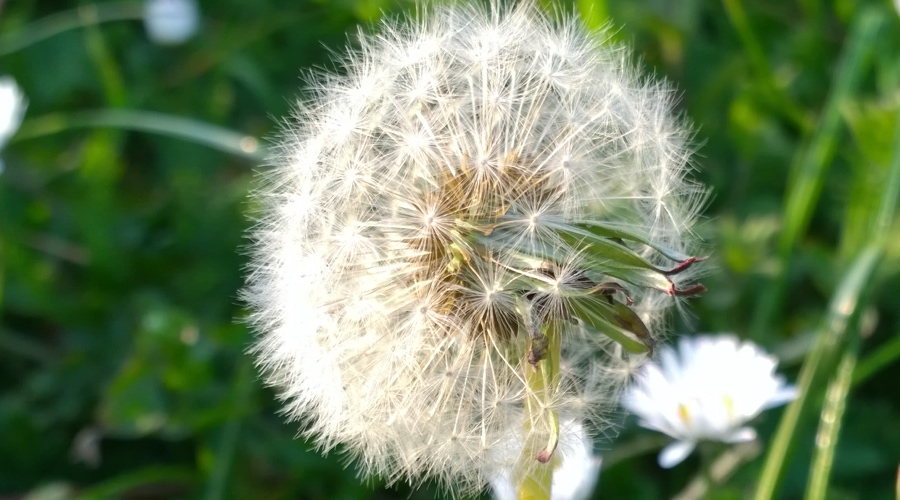

The P40 Pro fares even worse this time, it's not exactly clear where it thought the point of focus was in this real world 3D object - but the results (this was one of three attempts) are disappointing. Thinking back, I should perhaps have tried moving further away and using smart-crop zoom, as I used to do on the old Nokia 808. But then again, the 1020 was never renowned for macro shots like this and it producing a good photo here, so...
Being super-picky, the 1020 did, in fairness, blow out the dandelion edges, its dynamic range is not as good as modern multi-exposure HDR phone cameras.
Microsoft Lumia 1020: 9 pts; Huawei P40 Pro: 6 pts
Test 7: Nature's complexity
Again with my subjects limited by COVID-19, but it is what it is. I always like to see how phone cameras handle the amazing delicacy of nature, especially against a pure blue sky here. I'm looking for artefacts and artificial edges, in particular. Here is the overall scene:
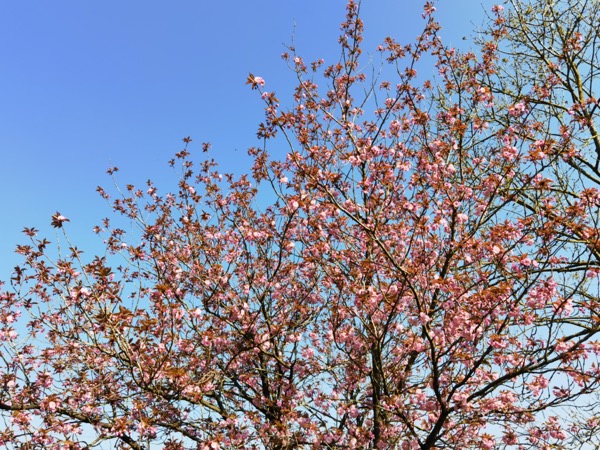
You can grab the original photos from the Lumia 1020 and Huawei P40 Pro, for your own analysis.
To look at the images in more detail here, here are fairly central 1:1 crops, from the Lumia 1020 and Huawei P40 Pro, just wait to make sure the page has fully loaded and then use your mouse or trackpad pointer to compare the images:
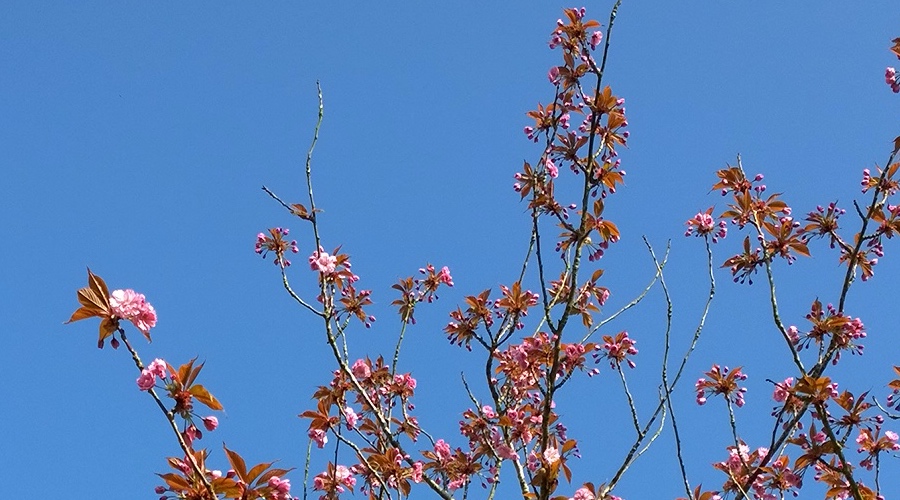
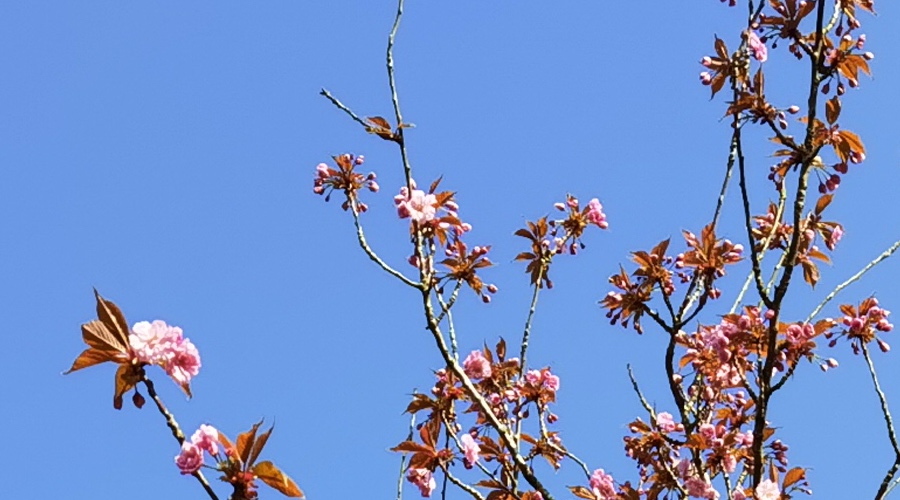
Despite field of view and resolution differences, you can see that the P40 Pro doesn't do too badly here, but there are definitely thicker edges to natural detail. It's that slightly-out-of-focus, slightly artificial look that I've complained about in many phones in the last few years. By comparison, your own eyes will be able to see the masterclass in PureView detail that is the Lumia 1020. Maximum points.
Microsoft Lumia 1020: 10 pts; Huawei P40 Pro: 8 pts
Test 8: Night time
My standard dead of night test. Back in 2013, most phone cameras simply couldn't capture this scene at all - you'd get a black rectangle. And in that age, the 1020 was the king. But things have moved on. Here is the overall scene (from the 1020, pretty accurate, though it did manage to lighten up the sky, to my eyes):
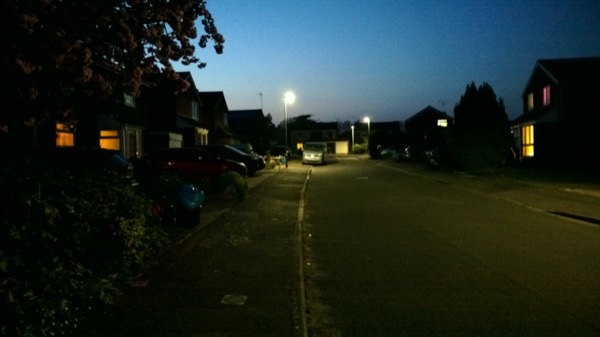
You can grab the original photos from the Lumia 1020 and Huawei P40 Pro, for your own analysis.
To look at the images in more detail here, here are fairly central 1:1 crops, from the Lumia 1020 and Huawei P40 Pro, just wait to make sure the page has fully loaded and then use your mouse or trackpad pointer to compare the images:

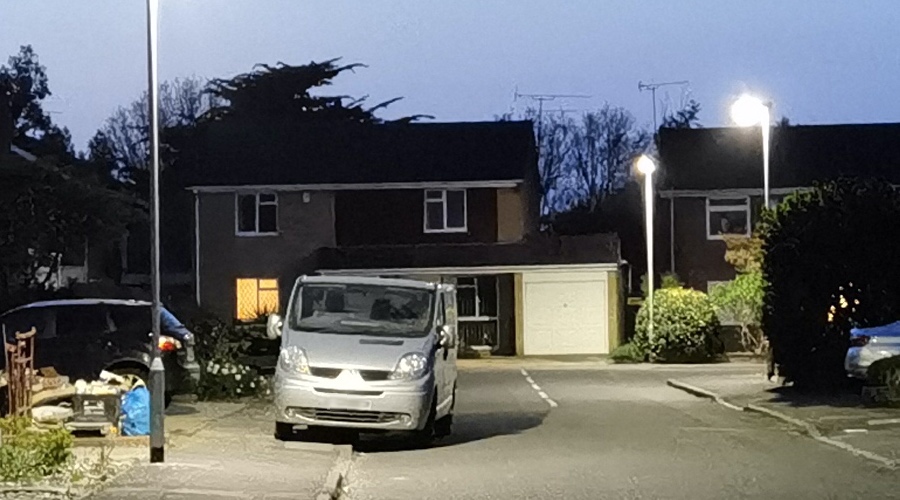
Dramatically lighter and with more detail, and it's notable that this was without using the dedicated 'Night' mode on the P40 Pro. I did test that, but it didn't improve things further, it just made the shot more artificial. In fact, there's so much detail in this night shot that I thought to artificially blur out the number plate in the silver van, for privacy reasons, i.e. you could read it clearly even at 80m, at night (albeit under a LED street light).
The 1020's shot is still more accurate in terms of light levels, but it also has a lot of noise, and (despite ball bearing OIS, a BSI sensor, and PureView oversampling) clearly belongs to a different era in terms of light imaging.
Microsoft Lumia 1020: 7 pts; Huawei P40 Pro: 9 pts
Test 9: Night White
An extra night test, with my white car hard to make out (to the eyes) on the drive, with only my very weak yellowish porch 'night' light to help.
To look at the images in more detail here, here are scaled down versions, from the Lumia 1020 and Huawei P40 Pro, just wait to make sure the page has fully loaded and then use your mouse or trackpad pointer to compare the images:
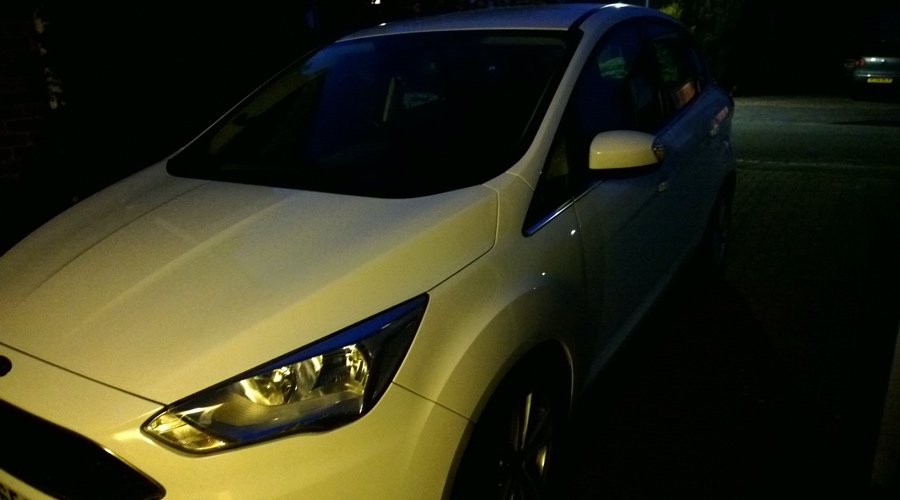
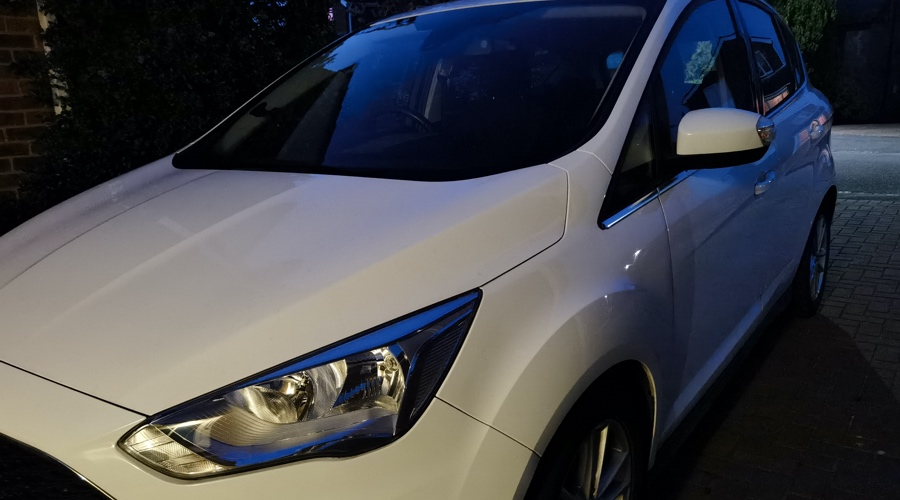
Now this is very interesting. The 1020 perhaps gets closest to the scene, according to my night-adjusted eyes, but the P40 Pro correctly shows the car as pure white. Sheer imaging magic, but very impressive. In fact, it's hard to catch the P40 Pro out in low light. That large RYYB sensor is terrific in what it captures.
So the 1020 gets points for real world representation, but the P40 pro gets the win for capturing colours that it has no right to!
Microsoft Lumia 1020: 7 pts; Huawei P40 Pro: 9 pts
Verdict
For the record, the scores add up as:
Lumia 1020 (2013): 77 pts (/90)
Huawei P40 Pro (2020): 77 pts
Now, wait, stop with the hate mail. The Lumia 1020 may have levelled this set of tests, against all expectations, and yes, the 1020 is still the king of the world for DSLR-like ultra-pure phone shots. But the 1020's so unsupported now that, even hacked to run Windows 10 Mobile, the Lumia Camera application takes over 10 seconds to launch! [Update: now solved, see my video!]
But it's still a data point for AAWP readers, and in my opinion the pinnacle of Nokia's PureView excellence in terms of image quality (the Nokia 808 was 'purer', but you also needed to carry around a tripod for best results!!) You'll probably agree. And also agree that it still zooms very well, and even - here - shoots macros superbly. If only we had a modern software solution that had the 1020's algorithms.
The P40 Pro would have won outright, of course, if I'd experimented more with how to shoot macro subjects; and if I'd known to double check the AI hadn't enabled wide-angle mode for landscapes. These things take time and experience and users with the phone will no doubt acquire this as they go. I wondered whether to go out a second time and re-shoot the P40 Pro images with the benefit of hindsight, but my experiences above will be typical for new users, so I've left them as is. It's not as if I'm recommending anyone to go out and buy a 1020 in 2020!!
From my previous conclusion, though, with the P40 Pro unable to use Google services, there are precisely two reasons to buy one - and they work together. First is if you're fearful of Google knowing too much about you - this is an Android phone that Google has zero knowledge of and with zero access to your data and whereabouts. Secondly, if you're coming from the world of Lumia and good imaging then, as suggested here, you also don't have to compromise too much in that department.
PS. For someone who wants to stay within the Google world, there are still plenty of decent modern imaging choices. Although not having quite the same zoom performance, I'd recommend the iPhone 11 Pro and the Google Pixel 4, for starters.
